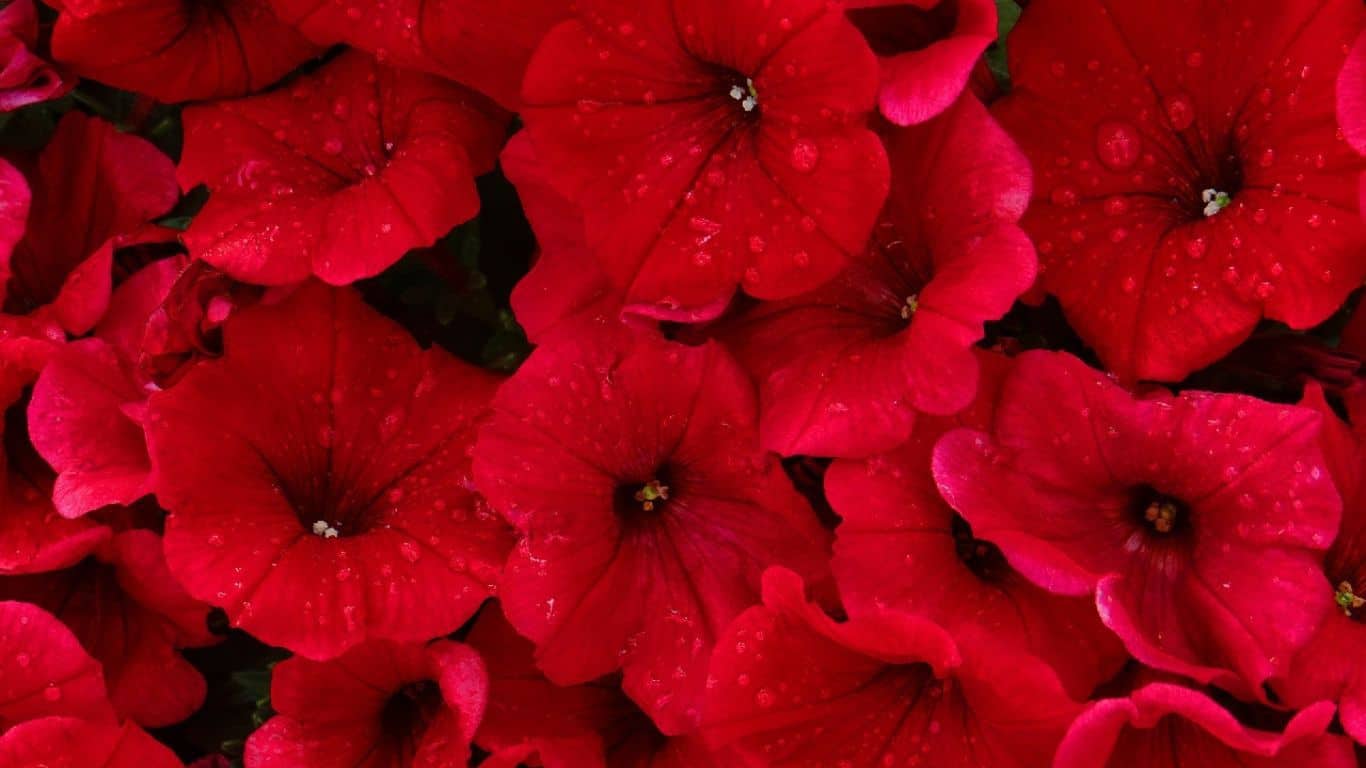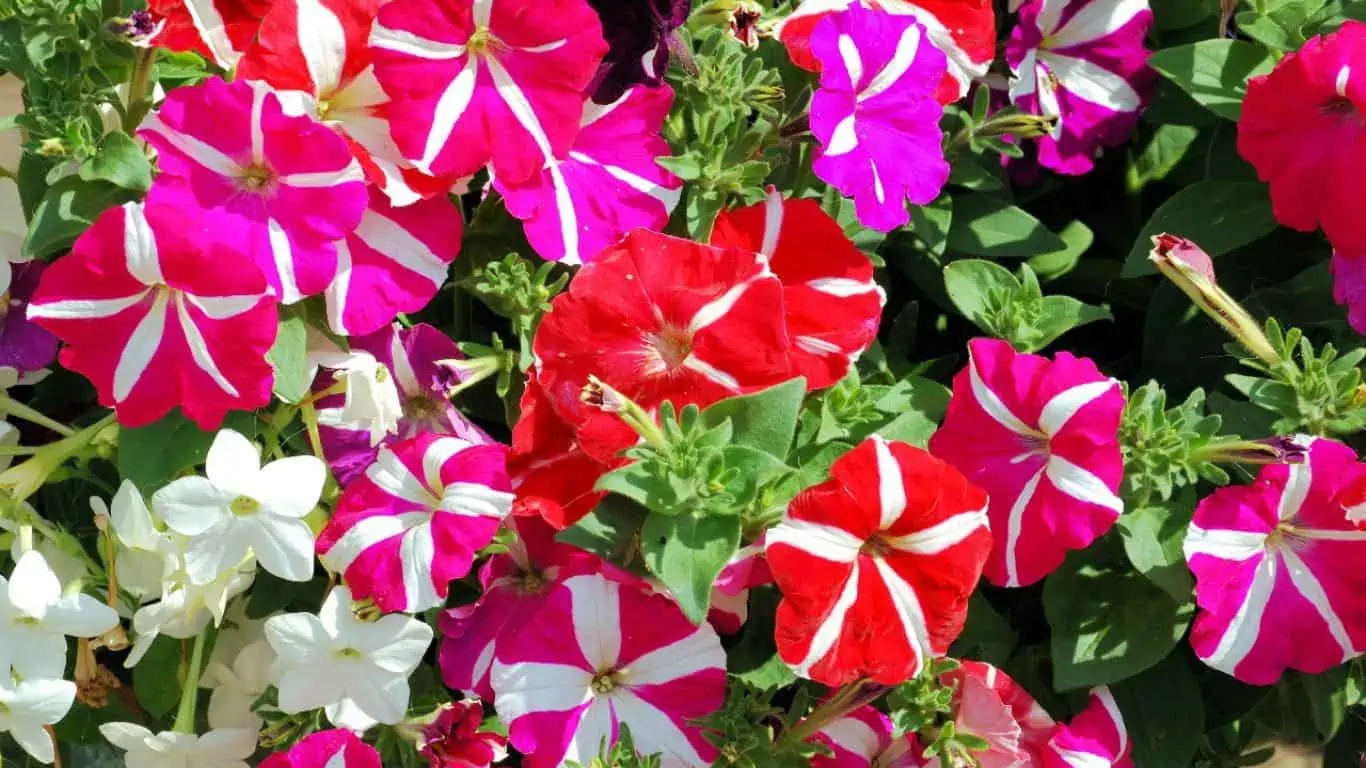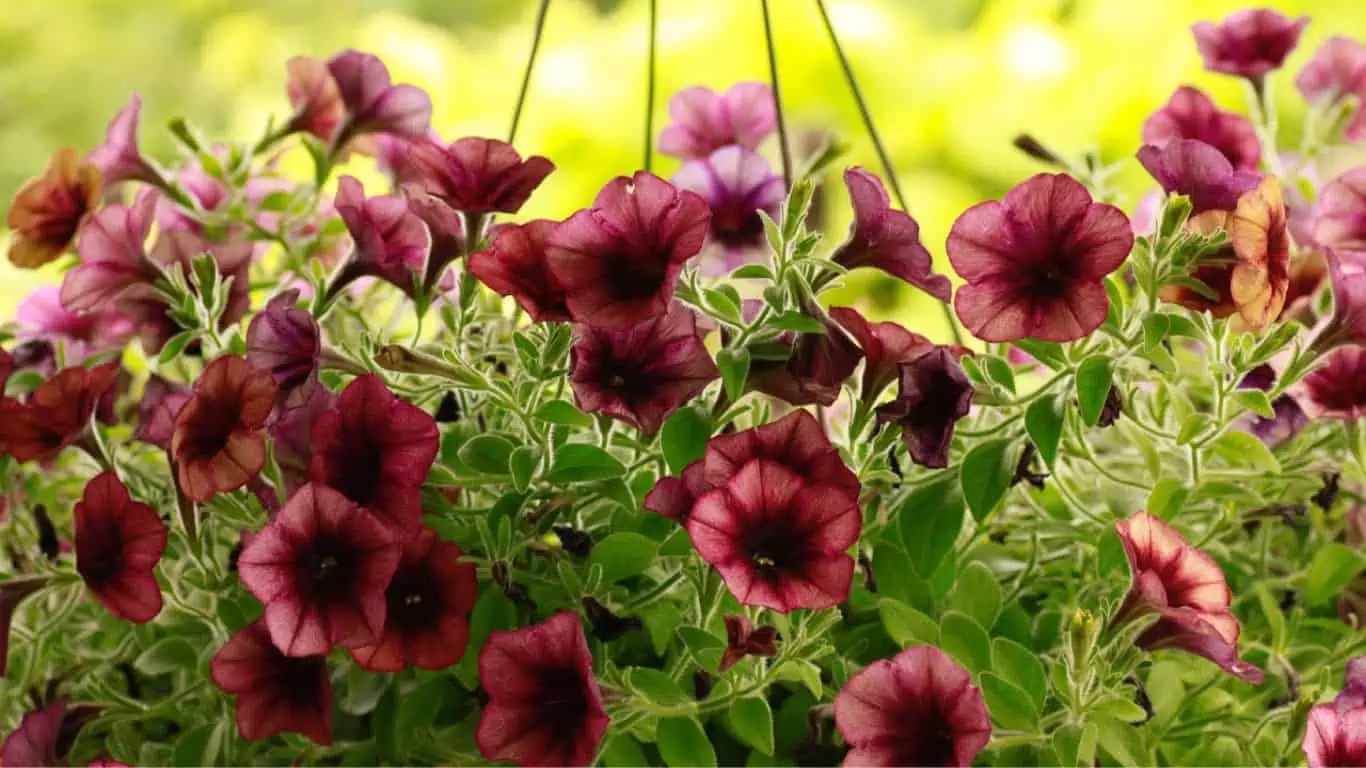Petunia is one of the most bought annual flowering plants. It is a favorite of every home gardener. If you like to grow them then check out How to Grow Petunia Plants? In this article, we will discuss Petunia Plant Care along with common Pest Problems and Solutions. So stay tuned and keep reading.
Petunias are small flowering plants from the Solanaceae family or the nightshade flower family. There are 100 or even more varieties of petunias available in different colors and patterns. You can find petunia flowers in every possible color that one can imagine, even in black. These flowering plants are short in height and pretty easy to grow. Apart from a few pests, there is not much to worry about mature petunia plants.
Only unfavorable weather like extreme heat or cold can harm these plants. They can’t tolerate frost though they can fairly survive the heat and mild drought conditions. Maintenance of a petunia plant is pretty easy if you keep a balance with the plant’s needs. They don’t require frequent feeding or watering. Although excess water can sometimes cause difficulties. It is the main cause of root rot and fungal diseases. Overwatering, lack of space, damp soil, and inadequate sunlight are responsible for every problem in petunias.

Also read: Are Petunias Perennial or Annual?
What kind of Pests Attack Petunias?
Mostly Sap sucking insects attack petunia plants. Petunia is a delicate flowering plant with a soft stem. It is easy for these bugs to scrape the skin and dig deep into the flesh. This way they get the nutritious sap that can help them to survive.
Pests like aphids, Thrips, bollworms are common in petunias. They feed directly on the plant sap. While other insects like caterpillars and Budworms feed on the foliage, tender stem, and flower buds. They eat and chew the plant parts.
These pests and insects can carry deadly fungal and viral infections. Wilting and dead patch on the stem is a common signs of viral diseases. Most viral diseases are incurable in petunias. The infected plant will eventually die.
Before proceeding with the details of pests and diseases we must understand their sources. Therefore let’s answer one more question-
Factors that Encourage Pest attack in Petunias
Let us first answer an important question- What are the factors that increase pest attacks in petunia?
Petunia is a low-maintenance plant. It does not require regular care, especially in favorable conditions. All it needs is cool summer days where the temperature remains under 25 degrees celsius or 70 Fahrenheit.
If the condition does not fulfill the basic requirements of a petunia then it may lose its vigor. The plant will become weak and unable to defend itself from pests and diseases. All of these and much more can happen if you miss the clue beforehand.
There are quite a few factors that can easily cause pests problems in Petunia plants. Just like any other flowering plants petunias are also prone to common garden pests and diseases.
- Too much heat and Sunlight
- Excess Moisture in Soil
- Improper Spacing
- Use of Infected garden tools
- Evening Watering
- Excess use of Compost and Mulch
Ignoring any of these conditions may lead to severe pest infestation in petunia plants. These problems will further extend to bacterial, fungal, or viral diseases. You should try to avoid these conditions as much as possible.
Common Petunia Pests and Diseases
- Aphids
- Spider Mites
- Budworm
- Leafminer
- Caterpillars
- Thrips
- Mealybugs
These pests can harm petunia plants. Although most of them attack only the weak plants. Petunias suffering from overwatering or improper sunlight are more likely to be attacked by pests. Basic plant care and prevention will help in controlling pests in petunias.
Apart from these pests, your petunias may face some diseases.
- Black Fungal Spot
- Root, Stem, and Crown Rot
- Botrytis Blight
- Verticillium Wilt
- Powdery Mildew
- Viral Infection, Dead patch by Mosaic or Yellow spot virus.
Pest and disease control is an essential part of Petunia Plant Care. You cannot get maximum bloom without keeping your plants healthy and free from disease.
How to Identify Pest Problems in Petunia Plants?
Stem and Crown Rot are easy to identify. These problems are due to fungal infestation. It can also harm the roots causing the ultimate death of petunia. If you found any grey or silver powdery deposit on the foilage then it can be fungus.
Wilting and leaf curling can happen due to several sap-sucking pests as well as diseases. Although wilting with a dark spot on stem and leaf is a dangerous sign of viral infestation.
Identification of exact problems especially the diseases in the petunia plant is quite difficult. You have to look upon every aspect from point of infestation to its impact. Even after identification, viral diseases are incurable in petunias. You can only get rid of the infected plant and start fresh.
Check out: How to Grow Sampaguita Flowers- Jasminum Sambac
Is It Difficult to treat pests in Petunia Plants?
Pest treatment in petunia plants is pretty easy especially if you act on time. Timing is the crucial factor for any plant problem. Treatment should begin as soon as you notice the problem. Regular treatment with biopesticides and soap water should be enough. If the situation persists then feel free to use general-purpose pesticides.
Careful observation and preventive measures are very helpful. Take care of the plants, regulate watering and allow proper sunlight for healthy plant growth. Altogether your efforts will keep the bugs away from petunia plants.
Only petunia diseases are incurable. Therefore isolate the infected plant away from healthy ones. If it’s dying then discard it and clean the soil. You can’t save it so start fresh with a new seedling.
Petunia Pest Control: Natural Treatment
Natural treatment is the best option for petunias. There are many options available for preventive as well as active pest control measures. Introduce predator wasp and ladybugs in the petunia garden. they can control the population of aphids, whiteflies, and other sap-sucking insects.
Sunlight is also a strong tool for pest control. Keep the plants clean and well-spaced in bright light. Most sapsuckers don’t prefer direct sunlight. They will try to avoid it and leave the plants.
Proper airflow between the stem and adjacent plants can keep pests away. Altogether you have to control the amount of water, and sunlight, and the rest will be done by the predator insects.
Mexican Aster Pests and Diseases
How To Control Pest and Diseases in Petunia plants?
- Spray petunia plants with neem oil solution once or twice every week. It is sufficient to deter most flying insects and pests away from the plant. Neem oil does not kill any bug instead it acts as an insect repellent.
- Soap water spray can help in deterring bugs and drown their eggs. It is effective in the treatment of whitefly, aphids, and mites.
- Introduce predator insects like ladybugs and treat the soil with a fungicide to cure soil-bourne pests.
- Sometimes washing petunia plants with warm water can also treat budworms and caterpillars. Make sure water is not hotter than 110 Fahrenheit.
- Use general purpose pesticides or insecticides once every week. It is helpful in the treatment of severe pest infestation.
- Petunia plant diseases are incurable. Although you can control their carriers to avoid further infestation. Treat every known pest and keep the plant clean.
- Change the position of petunia plants every 3 years. Petunias growing in the same location for multiple years may develop an affinity towards pests and diseases. The soil can contain fungal spores as well as eggs and larvae of many pests. The best option in this situation is to treat the soil with proper fungicide and pesticides. Soil solarization and dry fry techniques are also helpful in cleansing.
Petunia Plant Care

- Water the plants only when the topsoil becomes dry.
- Fertilize at regular intervals with balanced fertilizers and compost.
- Stake the soft stems to keep them above the soil surface.
- Deadhead spent flowers, especially in Grandiflora varieties of petunia.
- Use a light mulch to control weed and grass around the plant base.
- Allow proper 4 to 6 hours of direct sunlight for healthy plant growth.
- Keep an eye on pest growth and treat them as soon as possible. Use neem oil spray as a preventive pest control measure for petunias.


